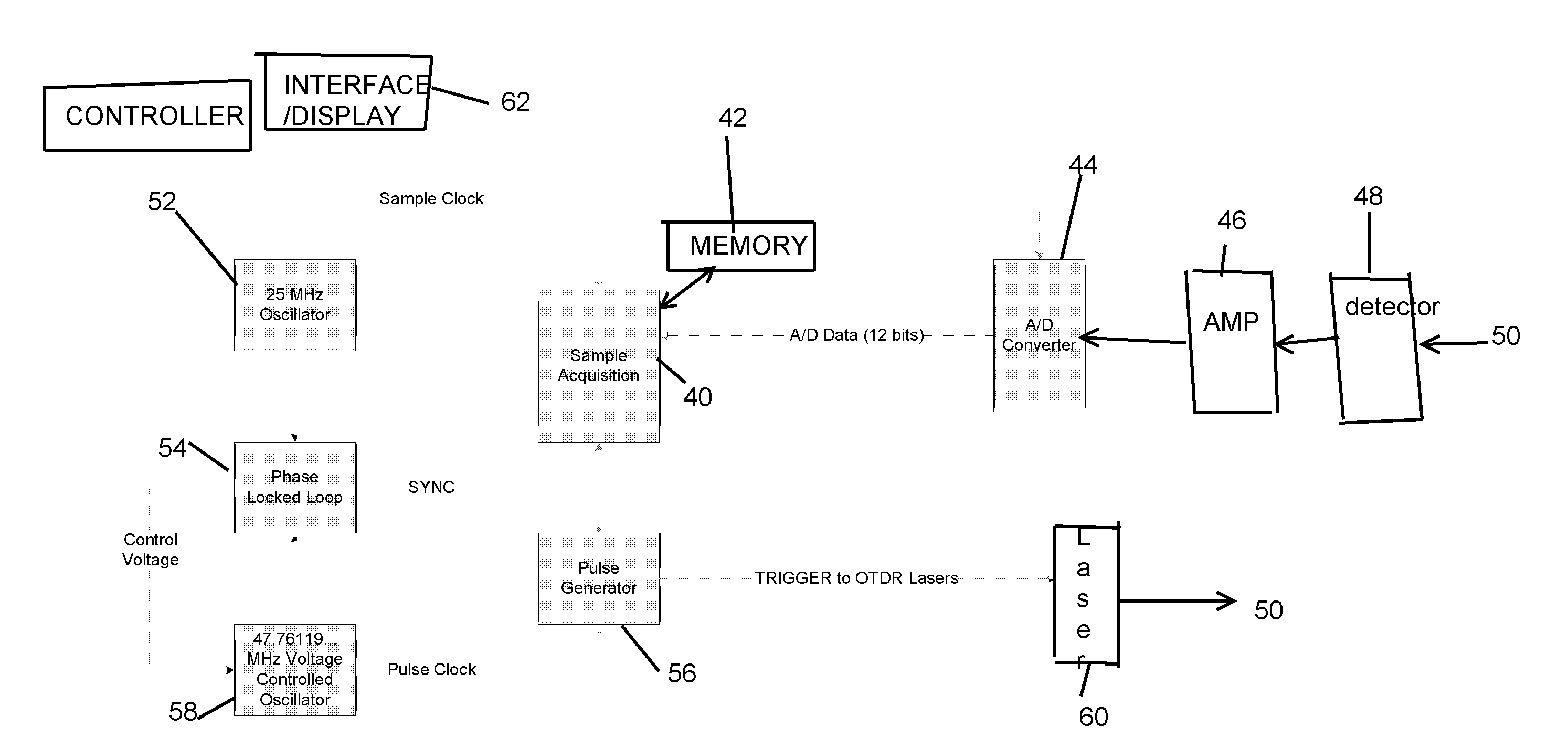Equivalent time sampling system
a sampling system and equivalent time technology, applied in the field of equal time sampling and optical time domain reflectometer, can solve the problems of high speed of delay circuit, inability to sample in real time, and inability to calibrate precision parts and also require high speed
- Summary
- Abstract
- Description
- Claims
- Application Information
AI Technical Summary
Problems solved by technology
Method used
Image
Examples
example
[0035
[0036]If the sample clock is 25 MHz, and Ns=128, then:
Ts=40 ns=Ns×Tq=128×(0.3125 ns)
[0037]The set of even divisors of 128, (available step sizes as multiples of minimum step), is:
[0038]1 2 4 8 16 32 64 128
[0039]This is the set of available trace time steps, in units of 0.3125 ns. Note that if desired, non-binary, more closely spaced time steps can be obtained by choosing a suitable Ns, such as the superabundant number 120. This number has divisors:
1 2 3 4 5 6 8 10 12 15 20 24 30 40 60 120
[0040]Next, we choose the pulse clock period. Like the sample clock period, the pulse clock period must be an integer number of minimum time steps:
Tp=Np×Tq
[0041]The pulse clock period and sample clock period, in units of minimum time steps, should have no common divisors other than 1, to obtain all the available time steps. This is always true if Np is prime, however primeness is not necessary.
[0042]Np and Ns must have no common divisors
[0043]Continuing the example, with Ns=128, we can choose ...
PUM
 Login to View More
Login to View More Abstract
Description
Claims
Application Information
 Login to View More
Login to View More - R&D
- Intellectual Property
- Life Sciences
- Materials
- Tech Scout
- Unparalleled Data Quality
- Higher Quality Content
- 60% Fewer Hallucinations
Browse by: Latest US Patents, China's latest patents, Technical Efficacy Thesaurus, Application Domain, Technology Topic, Popular Technical Reports.
© 2025 PatSnap. All rights reserved.Legal|Privacy policy|Modern Slavery Act Transparency Statement|Sitemap|About US| Contact US: help@patsnap.com



